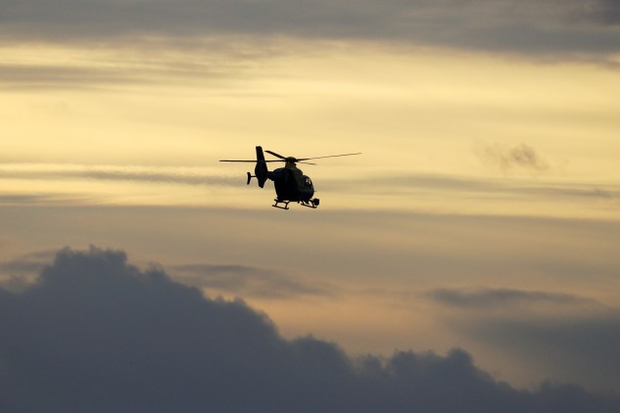Drones Force Airports, Agencies to Draw Up Take-Down Strategies
- TSA poised to take lead role in wake of Gatwick cancellations
- Wild card: `careless folks,’ unaware of runways, flying drones
The air travel industry and federal agencies, seeking to counter threats that could disrupt or cancel flights, are working on a new strategy to take down nearby drones.
The goal is to prevent the type of drone interference that kept hundreds of planes grounded at London’s Gatwick Airport over several days last December. Federal agencies will meet this week to revise a draft plan that would allow the federal government to take down drones that pose a significant threat to top U.S. airports, a Department of Homeland Security official said Tuesday.
The strategy would be a starting point to specify responsibilities for government and industry before, during, and after significant drone threats occurring at the top 30 U.S. airports, Carissa VanderMey, senior adviser at DHS’ Science and Technology Directorate, said in interview during a Baltimore drone conference hosted by the Federal Aviation Administration.
The Transportation Security Administration may serve as a lead agency in the actual take-down of threatening drones, but roles were yet to be made final, she said. A timeline for putting the plan in place may emerge after this week’s meeting, she said.
“The concept of operations is a guiding document for use by the federal government and state and local law authorities in responding to a Gatwick-like incident,” VanderMey said. “So our hope is that at the federal level we will have an agreed-upon process.”

The plan is a welcome first step to coordinate responses to a drone threat, Justin Barkowski, staff vice president of regulatory affairs at the American Association of Airport Executives, said in an interview after speaking on the panel.
Still, the effort stops short of resolving another major risk for airports: “Most of the problems we have aren’t nefarious actors,” Barkowski said. “It’s the careless folks who don’t even know they’re flying a drone near the end of a runway.”
This week’s meeting will include representatives from the DHS, TSA, FAA, the Justice and Defense Departments as well as industry and airport officials, VanderMey said. The National Security Council and Department of Energy were also involved in drafting the proposal, she said during a panel before the conference.
The DHS and Justice Department were given new authorities to track and interdict unmanned aerial systems in FAA reauthorization legislation (Public Law 115-254) that was enacted last October.
To contact the reporter on this story: Michaela Ross in Washington at mross@bgov.com
To contact the editors responsible for this story: Paul Hendrie at phendrie@bgov.com; Robin Meszoly at rmeszoly@bgov.com